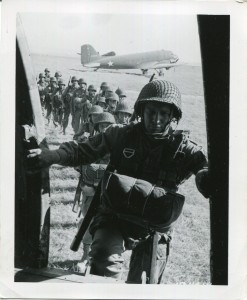By Patrick Feng, Foundation Programs and Operations Coordinator
When Americans read or hear about the Indian Wars, they are exposed to the familiar names like Sitting Bull, Crazy Horse, and George Armstrong Custer and his demise at the battle of the Little Big Horn in 1876. Little is known of the worst disaster experienced by the U.S. Army at the hands of Native Americans, which occurred eighty-five years prior to Custer’s last stand. It was a defeat that greatly overshadowed Little Big Horn not only in terms of casualties and brutality, but also in the consequences that resulted from the debacle. The Battle of the Wabash, also known as St. Clair’s Defeat, named after the expedition’s leader, Major General Arthur St. Clair, occurred on 4 November 1791, and was one of the first tests of the fledgling U.S. Army of the Early Republic.

Only two years after the ratification of the Constitution, the United States faced a challenge to its authority by the tribes of the Old Northwest Territory, an area which included present-day Ohio, Indiana, Illinois, Michigan, Wisconsin, and parts of Minnesota. Indian tribes were attacking American settlers at the encouragement of British agents from Canada and British troops still occupying various installations – a direct violation of the peace treaty that ended the Revolutionary War.
Prior to the Battle of Wabash, President George Washington had dispatched another expedition led by Brigadier General Josiah Harmar to quell the Miami raids, which were led by the Miami chief, Little Turtle. Faced with supply shortages and poor military planning, Harmar was soundly defeated by the Miamis and forced to withdraw.
Following the failure of Harmar’s expedition, another force was organized to march into the Northwest Territory to deal with the now confident Miamis and Little Turtle. This new expedition was to be led by Major General Arthur St. Clair, the governor of the Northwest Territory and a Continental Army veteran. The force included the First American Regiment, a second regiment of infantry, 800 six-month volunteers organized into two regiments of levies, Kentucky militia, and a few cavalry, which brought the strength of the army to 1,400 men.
St. Clair, who was plagued by illness and, some believe, unfit to command the expedition, set out with his force from Fort Washington, near present-day Cincinnati, in September 1791. He ordered his army to build a series of forts along the route of advance through hostile country, which slowed the army’s progress. By November, St. Clair’s force was only ninety miles from where it had started. The force, which was composed primarily of volunteer militia, experienced desertions since the onset of the campaign. Faced with frigid temperatures despite it being early fall, and constant supply trouble, the men were weakened and demoralized by the time they reached the banks of the Wabash River. St. Clair further weakened his army by detaching the First American Regiment to look for their late supply train.
On the morning of 4 November, Little Turtle led his warriors against St. Clair’s force across the river. The militiamen immediately fled, running through the main camp. The Indians charged the main line, which held with musketry and bayonets. St. Clair led the regulars in a bayonet charge and had two horses shot out from under him. He received several bullet holes in his clothing and had a lock of hair shot away. The artillery was able to fire its cannons, but had little effect due to the guns being aimed too high. As a result, the artillerymen fought in hand-to-hand combat with the Indians until most of them were dead. Major General Richard Butler, who was in command of the levy regiments, was shot twice and died in his tent. He was the first of four American generals killed in the Indian Wars.
The battle raged on for four hours. Women who accompanied the army fought desperately alongside the men and were also among the slaughtered. St. Clair finally ordered the camp abandoned, leaving behind the badly wounded and supplies, and led a breakout charge. Those who survived headed for Fort Jefferson. The rest were scalped, tortured, and murdered, including women and children. Of the 1,400 regulars, levies, and militia, 918 were killed and 276 wounded. Almost half of the entire U.S. Army was either dead or wounded in the aftermath of St. Clair’s Defeat.
St. Clair sent news of the defeat to Secretary of War Henry Knox and President Washington, who demanded St. Clair’s resignation. Congress was in a state of shock and ordered an investigation into the defeat. In early 1792, Congress authorized an increase in the size of the Army and creation of the Legion of the United States. Major General Anthony “Mad Anthony” Wayne was selected to command this new force and was named commander-in-chief of the Army. On 20 August 1794, Wayne was able to achieve what St. Clair could not and defeated the Indians at the battle of Fallen Timbers. The new Legion of the United States also brought the first displays of excellence and professionalism that were to be the foundations of the Regular Army.
The House committee charged with doing the investigation eventually found that St. Clair’s defeat was due to inadequate forces, gross mismanagement by the quartermaster and contractors, and the lack of discipline and experience in the troops. St. Clair received no blame for the disaster and was permitted to continue as governor of the Northwest Territory until 1802.


